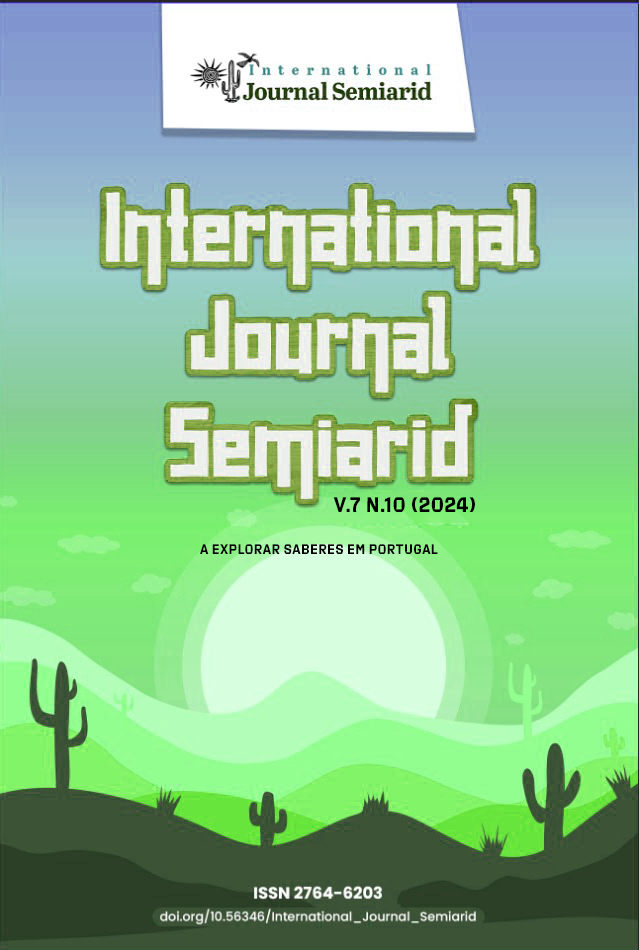DIVERSITY, MANAGEMENT AND RECOVERY OF VIVID COMMUNITIES IN MAINLAND PORTUGAL
DOI:
https://doi.org/10.56346/ijsa.v7i10.290Keywords:
conservation, desertification, flora, pastures, vegetationAbstract
Perennial grasslands are habitats of some fragility when not properly managed. On the other hand, they are associated with high floristic diversity, serving as refuges for biodiversity and sheltering endemic species. This chapter presents a review, description, and characterization of some types of acidophilic, mesophytic grasslands, which correspond to priority subtypes of protected habitats in Europe. These habitats are present in mainland Portugal and classified within the vegetation classes: Celtico giganteae-Agrostietea castellanae and Poetea bulbosae. The pressures and threats are analyzed, as well as potential conservation measures related to management practices. The possible need for recovery actions is also discussed.
References
Benayas JMR, Newton AC, Diaz A, Bullock JM. 2009. Enhancement of Biodiversity and Ecosystem Services by Ecological Restoration: A Meta-Analysis. Science 325 (5944): 1121-1124.
Castroviejo, S. (coord. gen.). 1986-2015. Flora iberica 1-9, 10-16(1), 17-18, 20-21. Real Jardín Botánico, CSIC, Madrid, ES.
Costa, J.C., Neto, C., Aguiar, C., Capelo, J., Espírito-Santo, M.D., Honrado, J., Pinto-Gomes, C., Monteiro-Henriques, T., Sequeira, M. & Lousã, M. 2012. Plants communities of vascular plants of Portugal (Continental, Azores and Madeira). Global Geobotany 2: 1-180.
Díaz Lifante Z. & Benito V. 1996. Revision del genero Asphodelus L. (Asphodelaceae) en el Mediterraneo Occidental. Boissiera 52: 7-186.
Dullinger, S. Dirnbock, T. Greimler, J. & Grabherr, G. 2003. A resampling approch for evaluating effects of pasture abandonment on subalpine plant species diversity. Journal of Vegetation Science 14: 243-252.
EC (European Commission). 2007. The interpretation manual of European Union habitats - EUR27. Brussels: European Commission DG Environment. http://ec.europa.eu/environment/
Hellström, k., Huhta, A.-P., Rautio, P., Tuomi,J., Okksanen, J. & Laine, K. 2003. Use of sheep grazing in the restoration of semi-natural meadows in northern Finland. Applied Vegetation Science 6: 45-52.
Hoffmann, M. & Isselstein, J. 2004. Seedling recruitment on agriculturally improved mesic grassland: the influence of disturbance and management. Applied Vegetation Science 7: 193-200.
ICNB. 2006. Plano Sectorial da Rede Natura 2000. Caracterização de Valores Naturais. Instituto da Conservação da Natureza. http://www2.icnf.pt/portal/pn/biodiversidade/rn2000/p-set/hab-1a9 nature/legislation/habitatsdirective/docs/2007_07_im.pdf.
Isselstein, J., Jeangros, B. & Pavlu, V. 2005. Agronomic aspects of biodiversity targeted management of temperate grasslands in Europe – A review. Agronomy Research 3(2): 139-151.
Janišová, M, Bartha, S, Kiehl, K, Dengler, J., 2011. Advances in the conservation of dry grasslands: Introduction to contributions from the seventh European Dry Grassland Meeting. Plant Biosystems 145 (3): 507-513.
Madruga-Andreu C, Plaixats J, López-i-Gelats F, Bartolomé J. 2011. Medium-term success of revegetation methods for high-mountain grassland reclamation in the Montseny Biosphere Reserve (NE Spain). Plant Biosystems 145: 738–749.
McNaughton S. J. 1984. Grazing lawns: animals in herds, plant form, and coevolution. American Naturalist 124: 863-886.
Moreira, N.; Aguiar, C. & Pires, J.M. (2001) - Lameiros e outros prados e pastagens de elevado valor florístico. Pastagens de Montanha. Direcção Geral de Desenvolvimento Rural. Lisboa. 47pp.
Olff H. & Ritchie M. E. 1998. Effects of herbivores on grassland plant diversity. Trends in Ecology and Evolution 13: 261-265.
Peco B., de Pablos I., Traba J. & Levassor C. 2005. The effect of grazing abandonment on species composition and functional traits: the case of dehesa grasslands. Basic and Applied Ecology 6(2): 175-183.
Prach, K, Jongepierová, I, Řehounková, K, Fajmon, K, 2014. Restoration of grasslands on ex-arable land using regional and commercial seed mixtures and spontaneous succession: Successional trajectories and changes in species richness. Agriculture, Ecosystems and Environment 182: 131-136.
Pykälä J. 2000. Mitigating human effects on European biodiversity through traditional animal husbandry. Conservation Biology 14 (3): 705-712.
Pykälä J. 2003. Effects of restoration with cattle grazing on plant species composition and richness of semi-natural grasslands. Biodiversity and Conservation 12: 2211-2226.
Ribeiro, S. & Espírito-Santo, M. D. 2015. Dinâmica de comunidades herbáceas no CE & SE de Portugal continental (Beira Interior e Alentejo). Guineana 21:1-212. ISSN 1135-7924.
Ribeiro, S., Delgado, F. & Espírito-Santo, M. D. 2012. Comunidades de Asphodelus bento-rainhae: diversidade, ecologia e dinâmica serial. Silva Lusitana 20(1/2): 135-143. ISSN 0870-6352
Ribeiro, S., Fernandes, J. P. & Espírito-Santo, M. D. 2014. Diversity and floristic patterns of Mediterranean grasslands: The relative influence of environmental and land management factors. Biodiversity & Conservation 23: 2903-2921. DOI 10.1007/s10531-014-0754-y
Ribeiro, S., Gonçalves, P. & Espírito-Santo, M. D. 2012. Land-use influence on Mediterranean perennial swards of Poa bulbosa: a case study in the International Tagus Region. Lazaroa 33: 51-64. Doi: 10.5209/rev_LAZA.2012.v33.40286.
Ribeiro, S., Ladero, M. & Espírito-Santo, M. D. 2013. Patterns of floristic composition of Mediterranean meadows and mesophytic grasslands in eastern Continental Portugal. Plant Biosystems 147(4): 874-892: 1-19. DOI: 10.1080/11263504.2013.788571.
Ribeiro, S., Simões, M., Felizes, F., Monteiro, A. 2019. Restoration of European habitats in mainland Portugal, using commercial seed mixtures. Considerations for its management and conservation. Plant Biosystems 153 (3): 352-359. DOI: 10.1080/11263504.2018.1478905.
Rivas-Martínez, S., Penas, A., del Rio, S., Diaz, T.E., Herrero, L., Pinto-Gomes, C. & Costa, J.C. 2014. Biogeography of Spain and Portugal. Preliminary typological analysis. International Journal of Geobotanical Research 4: 1-64.
Rudmann-Maurer K., Weyand A., Fisher M. & Stöcklin J. 2008. The role of landuse and natural determinants for grassland vegetation composition in the Swiss Alps. Basic and Applied Ecology 9(5): 494-503.
Salgueiro, T.A. (2008) - As pastagens - passado, presente e futuro. Revista de Ciências Agrárias 31 (1): 271-282.
Scotton M, Kirmer A, Krautzer B (Eds.). 2012. Practical Handbook for Seed Harvestand Ecological Restoration of Species-Rich Grasslands. Cleup, Padova.
Török P, Deák B, Vida E, Valkó O, Lengyel S, Tóthmérész B. 2010. Restoring grassland biodiversity: Sowing low-diversity seed mixtures can lead to rapid favourable changes. Biological Conservation 143: 806-812.
Vázquez F. M. & Barkworth M. E. 2004. Resurrection and emendation of Macrochloa (Gramineae: Stipeae). Botanical Journal of the Linnean Society 144: 483-495.
White R., Murray S., Rohweder M. 2000. Pilot Analysis of Global Ecosystems: Grassland Ecosystems. World Resources Institute. Washington.
Zimkova M, Kirilov A, Rotar I, Stypinski P. 2007. Production and quality of seminatural grassland in South-eastern and Central Europe. In: VlieghereCarlier (Eds.) - Permanent and Temporary Grassland – Plant, Environment and Economy.Grassland Science in Europe 12: 15-26.


